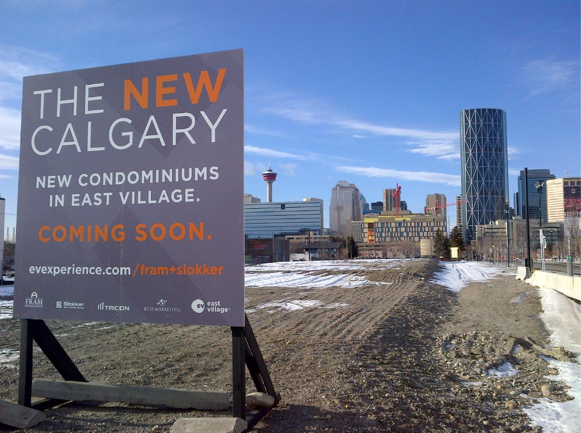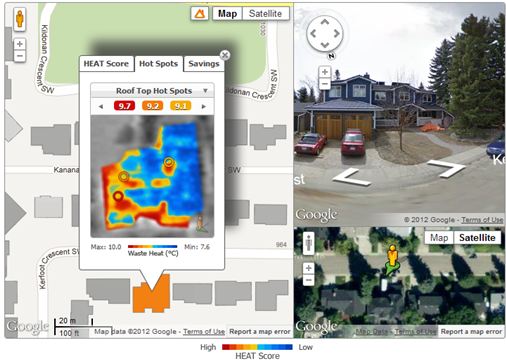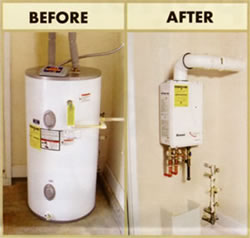There are those in Calgary who find it hard to imagine life without owning a car. But soon, the city could have a highrise full of people who wouldn’t have it any other way.

City officials and the East Village development agency are studying a plan for a condo tower with no parking stalls for owners. If approved, a parcel of land in the revitalized community would be sold to the private developer.
City hall’s mantra for the past few years has been to create better offerings for people who want to walk, bike and take transit instead of drive. But even the most modern and urbanist new residential buildings in Calgary usually have at least one parking spot per unit.
“The developer thinks that the time has come, and that there is a market for this. If the developer is the one who takes the risk, then it’s worth exploring,” Coun. Druh Farrell said Tuesday.
“We often think of Calgary as being car-dependent, and that’s true to a certain extent,” the East Village’s councillor said. “But that’s not recognizing the reality of the communities close to the core.”
Urban sociologist Jyoti Gondek said the Beltline or East Village is an ideal spot for a tower marketed to young professionals or retirees who don’t need to own cars.
“I hate to use a cliché term, but a ‘complete community’ can offer you many of the things you need or at the very least offer you enough transit options to get you where you need to go,” said Gondek, who sits on the Calgary Planning Commission.
Condo ads for East Village have targeted young buyers who crave downtown culture, funky local restaurants, cycling and sidewalks buzzing with activity.
Susan Veres of Calgary Municipal Land Corp. – the city-owned East Village developer – said it hasn’t received a formal application for a no-parking tower yet. But the agency is doing “due diligence” before reaching a sales agreement with a developer.
Earlier this month, Veres spoke to the Herald Homes section about a 160-unit tower in the works next to the St. Louis hotel – barely a block away from the City Hall LRT platform. Mac Logan, Calgary’s general manager of transportation, noted on Twitter this week that he’d been asked to support a proposed East Village tower with zero parking for cars but lots for bicycles.
“Our data shows owners of $300k+ condo value (almost) all have cars but the city is evolving,” he wrote.
One real-estate agent who specializes in condos doubts the demand is large enough to warrant a full building, based on the clients he is worked with downtown. “If they’re couples, they might not each have a car but they would usually have one car,” Gord Piper said.
He cited University City, the multitower development at Brentwood LRT, which has more units than parking spaces. But many buyers there have been property investors who rent out the suites, Piper said.
Coun. Gian-Carlo Carra has long seen potential for no-parking condos in Calgary, because they could knock several thousand dollars off a condo price.
“One of the things that makes urban lifestyles cost-prohibitive is the extreme cost associated with underground parking stalls,” he said. The councillor said he is looking into an affordable housing project in his ward’s Inglewood district that doesn’t rely on public subsidy – it cuts development costs by not building parking spaces with the units. Kim Jones, a 35-year-old university student, lives car-free in a Willow Park townhouse. Her parking space is part of her mortgage but she can’t use it because of an eye condition.
She has noticed a change among her Calgary friends over the past five to 10 years.
“It was unthinkable not to have a car, and I was this weird outlier who didn’t drive,” Jones said. “And now it’s not at all. People are starting to make that choice.”
The car-sharing system Car2Go has been hugely popular in Calgary, serving people with no vehicle.
There is growing attention in the United States to the millennials – people born since 1982 – shifting away from driving, and how that will change cities and transportation planning.
The proportion of Americans in their late teens and early 20s with driver’s licences has dropped from 80 per cent in the late 1980s to 67 per cent by 2011, says a report from the U.S. Public Interest Research Group last year.
The same report states that miles driven per capita has been dropping steadily since 2004.
Jason Markusoff, Calgary Herald
Published: Wednesday, March 19, 2014











